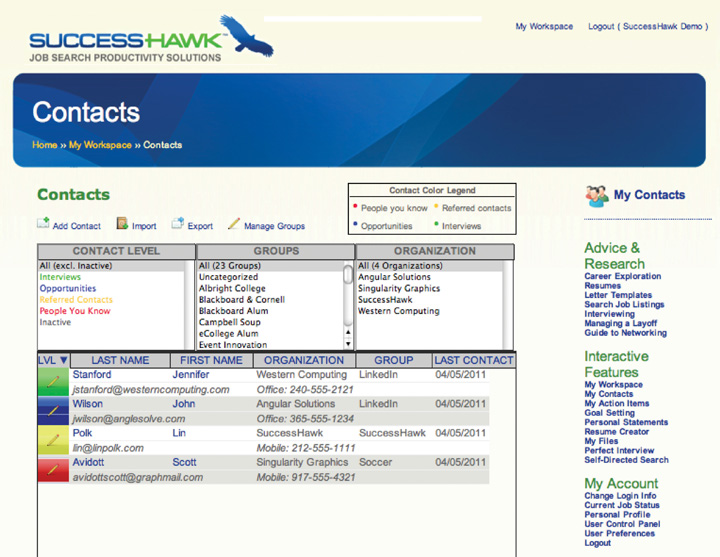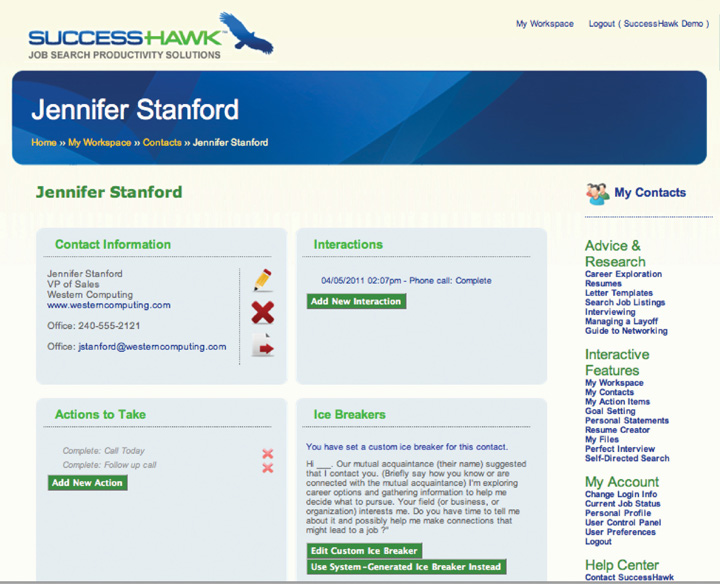We know the importance of networking. For job searches and career advancement, networking enables you to hear about unadvertised jobs or plum projects that could propel your career forward. A strong network is also beneficial for day-to-day personal needs—finding a good doctor, checking on a contractor, discovering a good place for Mexican food.
How do you know your network is strong enough to support you professionally and personally? Every few months, you should test the strength of your network:
For example, if there is a position open at Pfizer and you think you would be a very strong fit for that position, is there someone in your network that you can contact that may lead you to someone within that company? It could be someone at Pfizer or at a company that recently merged with Pfizer. It could even be a competitor to Pfizer, as competitors often know and network with each other. Testing your network is a wise thing to do because you can then strengthen it proactively.
If you have fewer than twenty-five strong professional contacts you could reach out to now, your network is too small. If you have deep, quality connections with a small number, this is a good start, but you also need quantity in your network. Make it a priority to meet new professional contacts. If you have the quality and the quantity, but you don’t feel like you could reach out today, then you have an issue with maintaining your network. Make it a priority to follow up with people you already know. As a bonus test, ask yourself how many people you could contact for personal needs. Look at the quantity but also the variety in your personal network.
When was the last time you had lunch or a cup of coffee with a contact other than your day-to-day colleagues or closest friends? If it is has been more than a month or you cannot remember, this is a danger sign that your networking is too insular. You are not exposing yourself to diverse perspectives. Remember the preceding point about how important it is to maintain your network. Earmarking some lunch hours for your networking contacts is a great way to follow up with your network.
Mentors can be a tremendous help when you need to network. When you need some off-the-record advice or candid feedback, do you have people you can query who understand your role, your company, and your industry? If not, then you are not taking advantage of mentorship in your career. Mentors are more than senior people who can move you to the next level by sheer influence, although such a powerful type of mentor can have a place in your career. Mentors can also be your peers and often are colleagues who have an insight you don’t have and are willing to share it with you. Maybe they have been at the company longer and have a great sense of the politics; maybe they are superstrong presenters and can be your practice audience before you have a big meeting.
Networking isn’t something you can cram into last-minute efforts. A strong network is built over time and with deliberate attention to the quantity and quality of the contacts. Audit your network on a regular basis (set Outlook to remind your quarterly) so that you consciously tend to your network before you face a crisis situation.
No one likes a person who reaches out only when they need something. No one wants to be the person who needs something, but feels all alone. Build a strong network so that you can make requests without imposing. Build a strong network so you don’t have to go it alone.
Chapter Takeaways
- Networking is defined as establishing a long-term, mutually beneficial relationship of give and take, with an emphasis on the give.
- Networking is about quality and quantity.
- The power of networking is infinite because people who know, like, and trust you will open their networks to you.
- Networking has four stages: research, approach, follow-up, and request.
- Proactively reconnect with contacts, but your first reconnection should not include a request.
- Your networking pitch is crucial to your job search and should be written, edited, and practiced until it’s delivered in a confident and proactive manner.
- Networks must be built consistently, on a daily basis.
- Even if you are shy, you can use simple strategies to build a network.
- Many on-campus venues exist for meeting people and building your network, including student clubs, career services, professors, and so on.
- Definite strategies can be used to include senior people and recruiters in your network.
- Social networking sites like Facebook and LinkedIn can be used in a variety of ways to increase your networking ability.
- Digital dirt can hurt your candidacy with recruiters and hiring managers alike. Present yourself professionally in person and online.
- Case studies can help to ensure business etiquette on your part and on the part of others.
Chapter Review
- How do you define networking?
- Why would a person open up their network to you?
- What are the four stages of networking and why must they occur sequentially?
- How do you reconnect with old contacts without seeming disingenuous?
- How do you follow up with new and old networking contacts? Name three to four ways of doing so.
- What are the key components of a networking pitch?
- How do you construct a networking pitch?
- How do you build your network on an ongoing basis?
- How can you use a 2 × 2 matrix to build your network?
- What questions can you ask during networking events to help get the conversation started?
- What strategies exist for building a network, even if you are shy?
- How can you build a network on campus and with whom?
- How can you include senior people in your network? What about recruiters?
- What social networking sites can help you network more effectively?
- What is digital dirt and how can it hurt your job search strategies?
- What are the differences among LinkedIn, Facebook, Twitter, and Doostang?
- How can you create your own networking case studies to continue your learning? Reviewing case studies in effective networking behavior can be helpful in the overall process.
SuccessHawk: Network
Contact Manager
Contact Manager is the place to store information about your contacts, how you know them, their personal information, information about their organization, and a record of your interactions. Everything you need to know about each contact is conveniently located in one place.
Spend some time reviewing the kind of information you can save for each of your contacts. Note that SuccessHawk provides you sample icebreakers to get a conversation started and questions to ask to keep conversations going. You will find that these features adjust as your relationship with the contact develops.
To populate Contact Manager manually, click on Add New Contact in the Contacts section of My Workspace and fill out as much information as you can in the forms provided. Or you can upload basic contact information from Microsoft Outlook, Apple Address Book, Gmail, Hotmail, and others by clicking on Import Contacts in the Contacts section of My Workspace and following the appropriate directions.

You can view a complete list of your contacts by clicking on View Contacts. Note that you can organize your contacts by the company for which they work, organizations to which they belong, your last interaction with them, or by the status of your relationship:
- People you know
- Referred contacts
- Opportunities
- Interviews
To open an individual’s contact information page, simply click on the person’s name.





